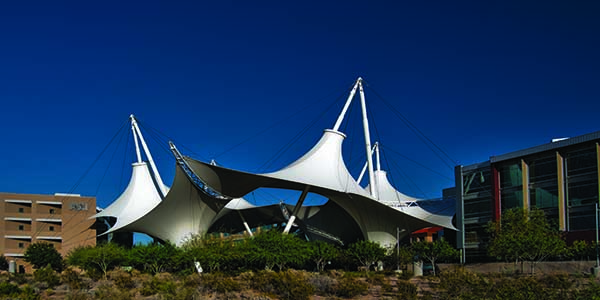A new study by the NAIOP Research Foundation offers insight into the development and growth of “innovation districts,” an economic development tool based on the notion that entrepreneurship and innovation can be stimulated in environments that both satisfy space needs of companies in different life cycle stages and encourage employees to interact and exchange ideas in a mix of settings.
The study looked at common traits between several innovation hubs around the country that encourage collaboration and business growth. Some of the traits include:
- Incubators providing facilities, mentoring and training to early stage startups.
- Accelerators offering supportive services and/or capital to firms with growth potential.
- Flexible office/lab space available on a short-term basis with management in place.
- Programs fostering networking and collaboration among diverse individuals.
- Attractive/affordable housing options for knowledge-intensive employees with unique demands.
- Common areas, design features and retail outlets encouraging informal interactions.
The study provides those interested in innovation district development – from practitioners to policymakers – with a better understanding of the factors contributing to the success of these projects, as well as the challenges they must frequently overcome. It also examines the structure of these transactions in terms of their design features, financing structures, partnership arrangements, leasing strategies and policy objectives in an attempt to determine how each of these elements effects a project’s outcome.
“Innovation district investments are expected to yield substantial returns in terms of economic diversification, job growth and the commercialization of new ideas in post-industrial cities, where competitive advantage often stems from product and process improvements made possible by collaboration,” said Thomas Bisacquino, NAIOP president and CEO.
The report, Case Studies in Innovation District Planning and Development, authored by Dustin C. Read, Ph.D., J.D., assistant professor of property management and real estate, Virginia Tech, details four innovation districts. It explores each project’s development and factors contributing to its level of success.
SkySong, the ASU Scottsdale Innovation Center, Scottsdale, Arizona
A 42-acre mixed-use development project that will include 1.2+ million square feet of office, lab and meeting space at buildout, as well as 12,000 square feet of retail space and 325 apartments. SkySong is located on the site of a former defunct regional mall. Arizona State University (ASU), the ASU Foundation for a New American University and the city of Scottsdale joined together in 2005 to redevelop the property in hopes of revitalizing the area by attracting rapidly growing technology firms.
The Cortex Innovation Community, St. Louis, Missouri
A roughly 200-acre district in the heart of Midtown St. Louis, Cortex is the product of a partnership among many local institutions, primarily BJC HealthCare, the Missouri Botanical Garden, St. Louis University, the University of Missouri-St. Louis and Washington University in St. Louis. The partnership began in 2002 to transform a once-blighted industrial area into a setting ripe for entrepreneurial activity in the life sciences and biotechnology fields.
Tech Center at Oyster Point, Newport News, Virginia
A $450 million technology park that will eventually include 11 buildings and 940,000 square feet of office and lab space on a site adjacent to the Thomas Jefferson National Accelerator Facility. The first phase of the project includes 250,000 square feet of retail space anchored by Whole Foods and a nearby 288-unit apartment complex. Construction of the technology park is planned to begin in 2017.
Technology Square, Atlanta, Georgia
This 1.3+ million-square-foot mixed-use development in Midtown Atlanta already features eight new buildings and is expected to grow dramatically by 2018, with the completion of a new mixed-use tower featuring lab, office and retail space. It was spearheaded by the Georgia Institute of Technology (Georgia Tech), which led a public-private initiative to accommodate its expansion and to revitalize an eight-block area near its main campus that was in dire need of capital investment.




